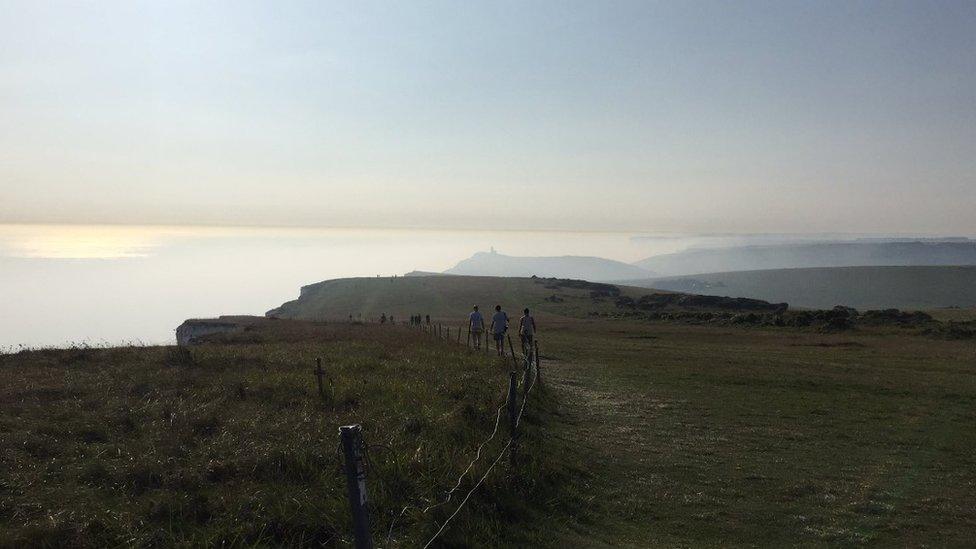Birling Gap chemical haze 'caused by ship'
- Published
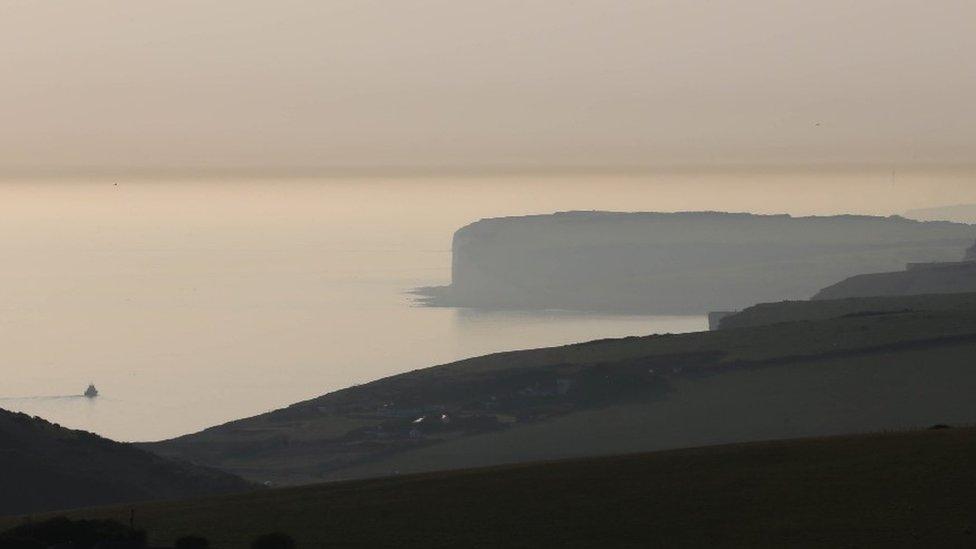
Birling Gap beach is part of the Seven Sisters chalk cliffs
The source of a chemical haze that hit the south coast last summer was most likely a ship, a wreck or lost cargo in the Channel, a Defra report has said.
More than 150 people needed hospital treatment on 27 August after gas engulfed Birling Gap beach in Sussex.
The report, external said no gas samples were taken, but Eastbourne MP Stephen Lloyd said there was no equipment available, external.
He called for monitoring and equipment in case a similar event happens again.
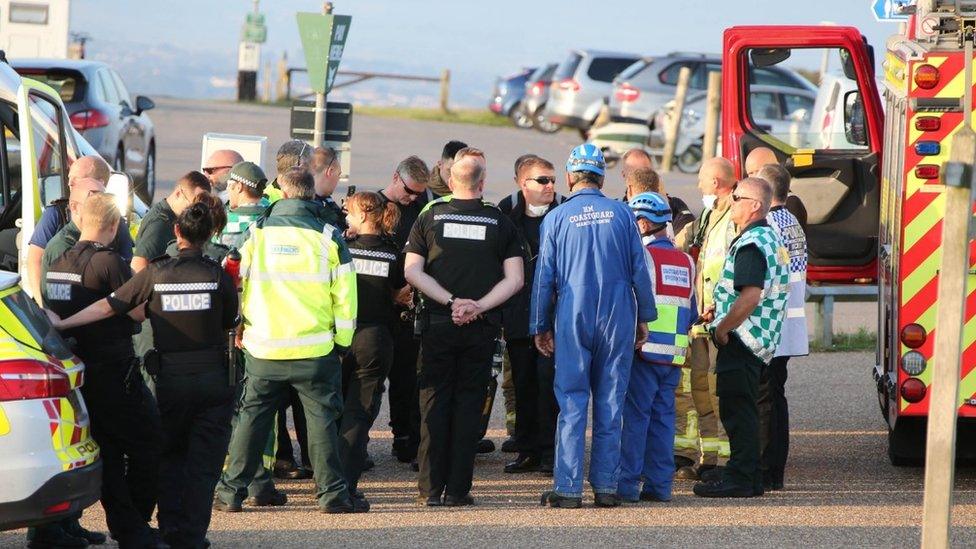
The chemical mist hit the beach during the busy bank holiday weekend
Mr Lloyd said: "If one person had died - for example an asthmatic or an elderly person - and there was no equipment to store the gas, it would have been an absolute scandal.
"I am chasing the minister to demand funding for appropriate monitoring and equipment."
The beach was evacuated and South East Coast Ambulance declared a major incident.
People reported burning eyes, sore throats, skin irritation and vomiting and gave conflicting reports with some saying the smell was odourless, like burning plastic, and others describing it like chlorine and ammonia.
The report said gas detectors identified flammable gas and ammonia, but no levels that gave concern, while air quality monitoring stations recorded peaks in ozone and sulphur dioxide, which may have come from shipping lane exhaust fumes.
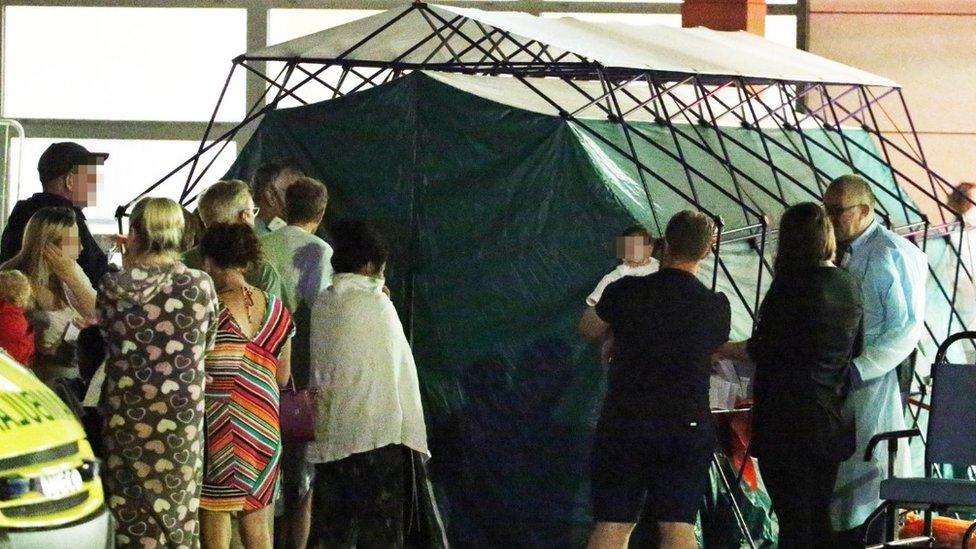
Long queues built up at Eastbourne General District Hospital

Initially, patients were given full decontamination as a precaution
A Defra spokeswoman said: "Despite a comprehensive investigation it has not been possible to identify a specific source of the gas cloud.
"Given the meteorological evidence, the most likely source was a passing ship, lost cargo or a wreck in the English Channel."
Defra confirmed a sample was not taken for later analysis because appropriate equipment was not available at the site, and the gas dispersed quickly.
The report said there were about 180 ships in that part of the Channel that day.
Individual ships were the subject of a separate investigation, while the operational response was still being reviewed.
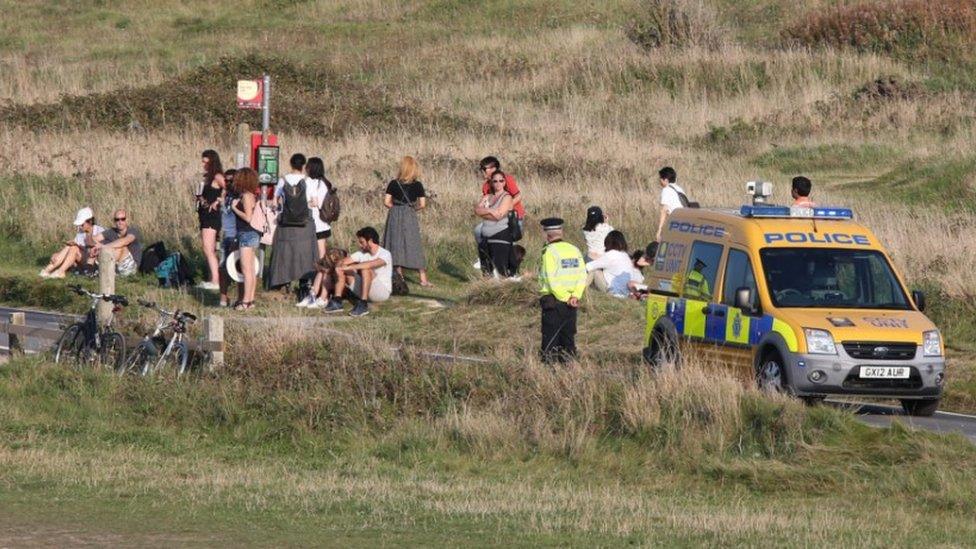
Symptoms included vomiting and eye, throat and skin irritation
- Published1 September 2017

- Published29 August 2017

- Published28 August 2017

- Published27 August 2017
